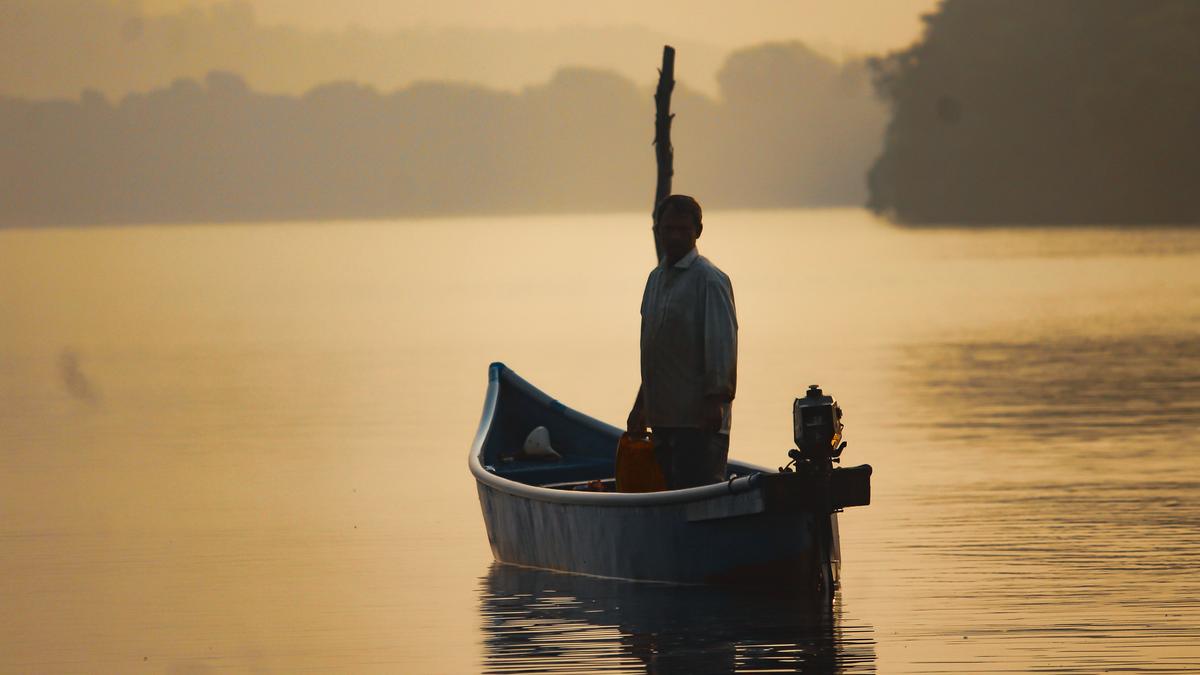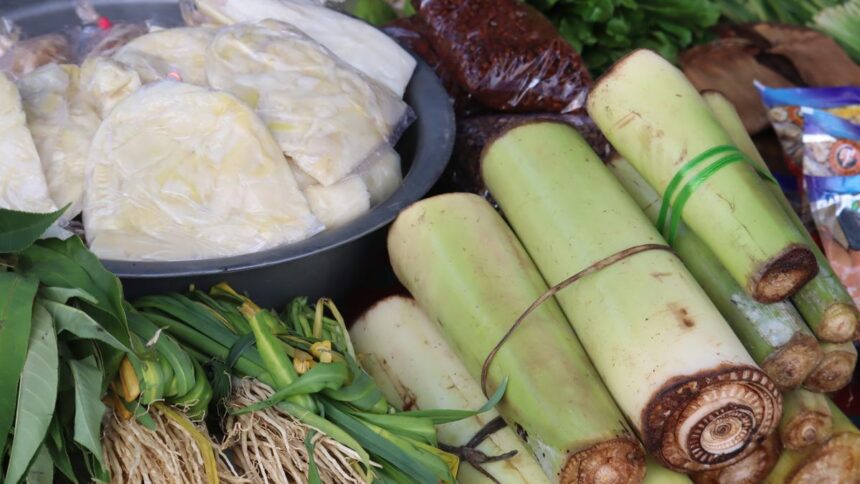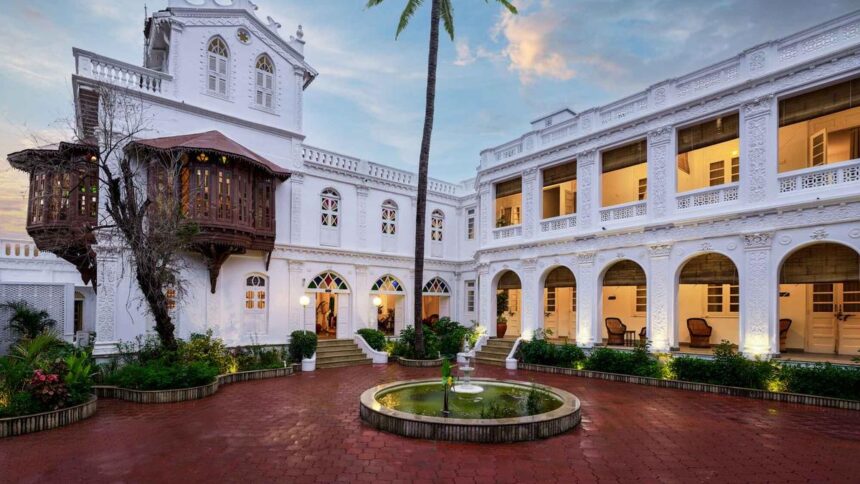You can tell a lot about a place by how it behaves in the rain. North Goa, with its sunny bravado and beach-bar buzz, tends to take a back seat come monsoon — shuttered shacks, quiet lanes, Aperol dreams on pause. But South Goa unfurls.
Airbnb seems to have picked up on this shift in rhythm. Their recently launched digital magazine, Goa Unseen, is a soft pivot away from the usual must-do lists. It is thoughtful, image-rich, and most notably, tilted toward the South.
According to Airbnb, monsoon bookings in South Goa have seen a steady 20–25% rise over the past few years. There is a growing curiosity for experiences that feel slower, more grounded, and a little more, well, real.
Nature trail
| Photo Credit:
Soul Travelling
Take Netravali Wildlife Sanctuary, one of the crown jewels in the South. In the rains, it feels almost cinematic. There is a low hum in the forest, mist drifting lazily between trees, waterfalls crashing just out of sight, and trails that do not demand much. Then there is Loutolim, a sleepy village in the South that feels lifted from another decade. All wide balcaos, tiled roofs, and giant banyan trees that appear to breathe. Airbnb’s highlights here include stops like the Big Foot Museum and heritage homes such as Casa Araujo Alvares, but the real charm is in the stuff between — the slow lanes, the locals who still wave, the unhurriedness of it all.
Unhurried pace
Local journalist and food writer Nolan Mascarenhas, who contributed to Goa Unseen, believes the South has retained its character because of its people. “There’s more cultural awareness here,” he says, “A stronger sense of protecting what matters.”
He points to Mainapi, where the Lamani community — with advance notice — welcomes visitors to witness traditional tribal dances, jewellery-making, and stories of nomadic life. Nearby, the Kunbi tribe, one of the oldest in Goa, offers an immersive lesson in sari draping, laced with lore passed down through generations.
Slow down and unwind in South Goa
| Photo Credit:
The Local Beat
For foodies, Nolan’s suggestions stay close to the ground. Try toddy and feni tastings in Cansaulim, often served straight from the source, or even on floating tables in the backwaters. Head to Tanshikar Spice Farm near Netravali for a breezy plantation tour followed by a home-style Saraswat thali. And he insists stopping at Jila Bakery, in Loutolim, where the chocolate-dipped profiteroles (₹20 a pop) are a must try.
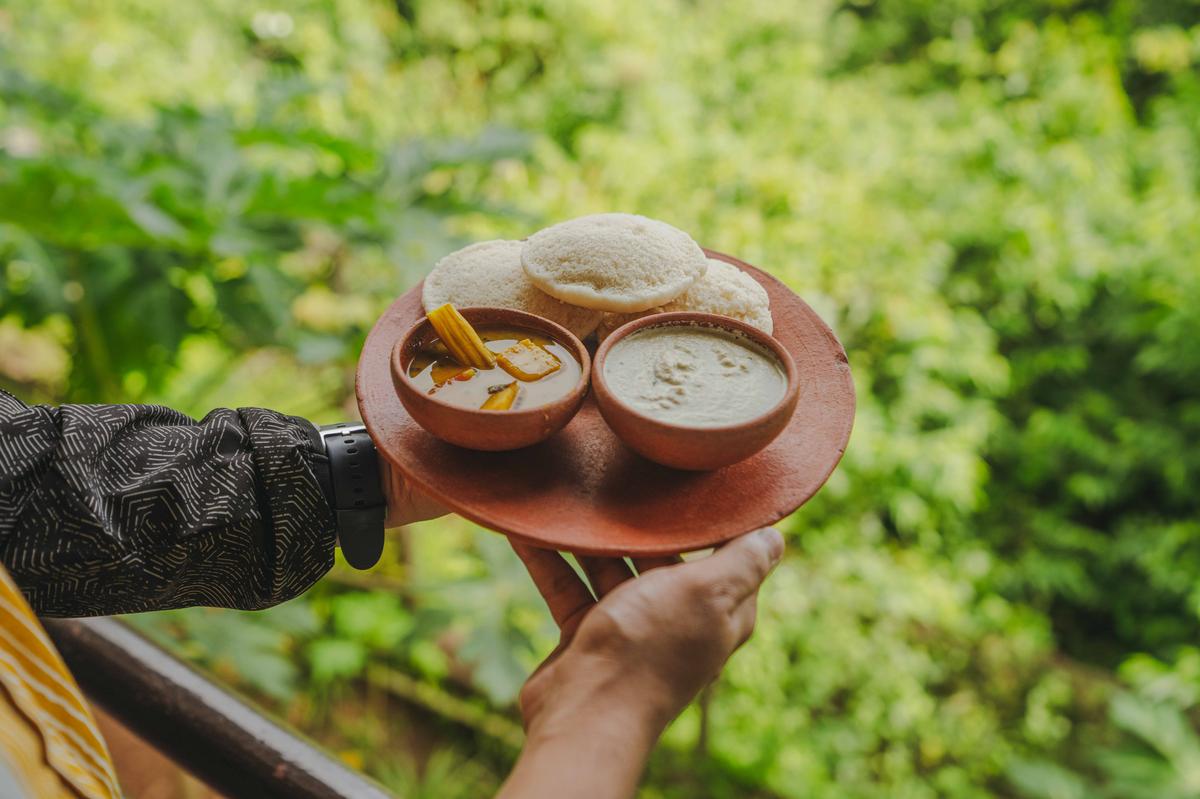
Food is an integral part of these trails
| Photo Credit:
Soul Travelling
Nolan also swears by kayaking down the Talpona and Galgibaga rivers, quiet estuaries flanked by mangroves, where you are more likely to spot otters and kingfishers than other humans. And for something a little darker, there is Devil’s Canyon — a gorge near Molem where water barrels through basalt rock, steeped in local lore and photographic drama. Swimming is not recommended. But hiking around it is.
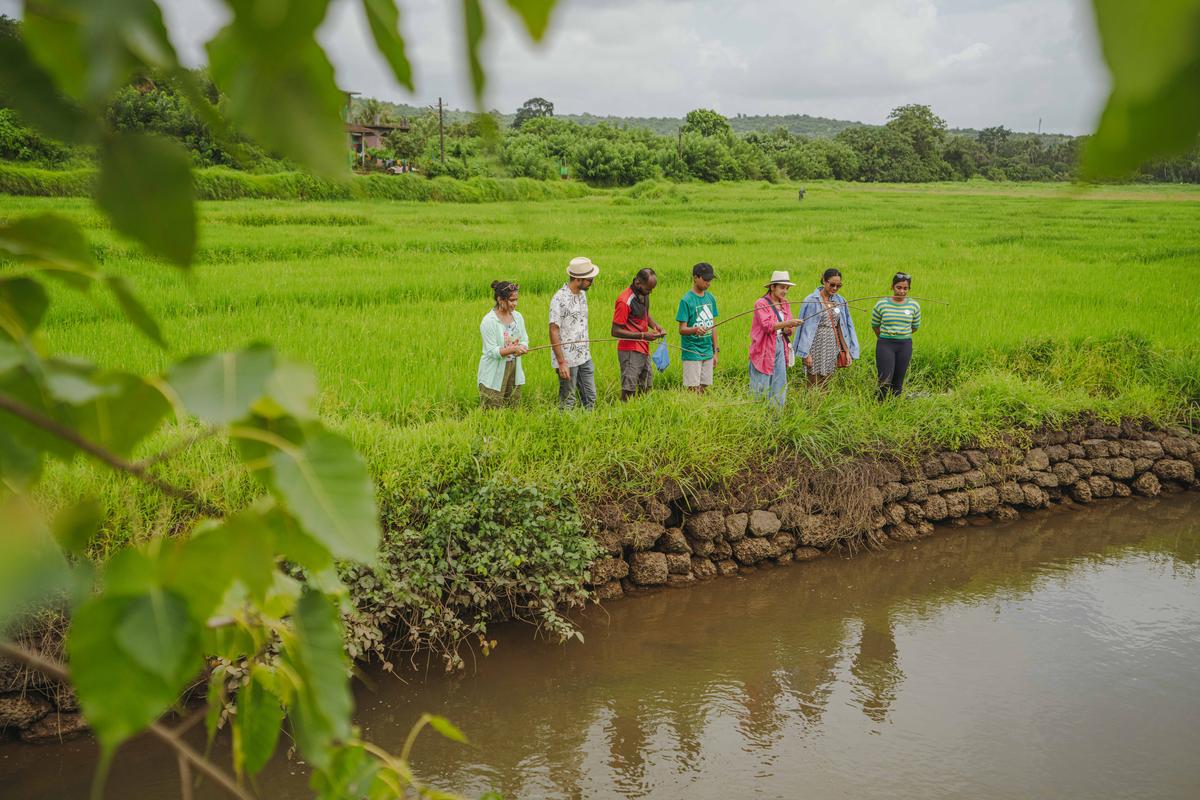
Fishing in the monsoon
| Photo Credit:
Soul Travelling
It is not just Airbnb championing this version of the South. A few homegrown initiatives have been quietly making the case for years. Soul Travelling, founded in 2017, started with two heritage walks in 2019 and now runs five in South Goa alone. “The rain doesn’t cancel the walk,” says co-founder Varun Hegde, “It sets the mood.”
Their Chandor walk takes you through Goa’s old capital, past ancient Brahmin homes and mossy Portuguese villas, typically costing around ₹1,300-₹1,500 per person. The Margao Food and Culture Walk is a sensory feast — markets, spice-scented kitchens, and rainy-day snacks you will never find on Google, usually priced at about ₹799-₹1,299 per person. In Assolna, stories unfold by the river, with similar heritage walks generally ranging from ₹1,299-₹1,799. And in Cuncolim, their newest and perhaps most powerful walk, you encounter tales of pre-colonial resistance and forgotten local heroes, with prices for such curated, deep-dive historical walks often falling in the ₹1,500-₹3,500+ range, depending on the depth and duration
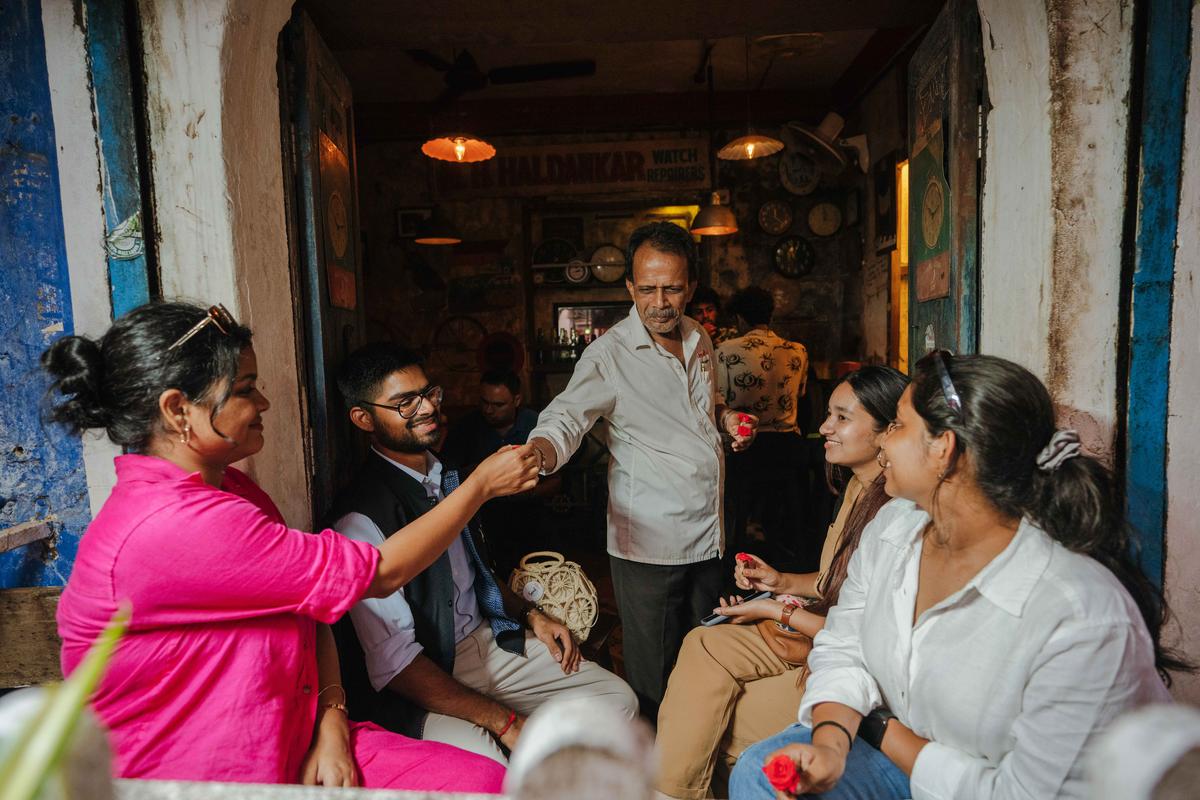
A tavern hop
| Photo Credit:
Soul Travelling
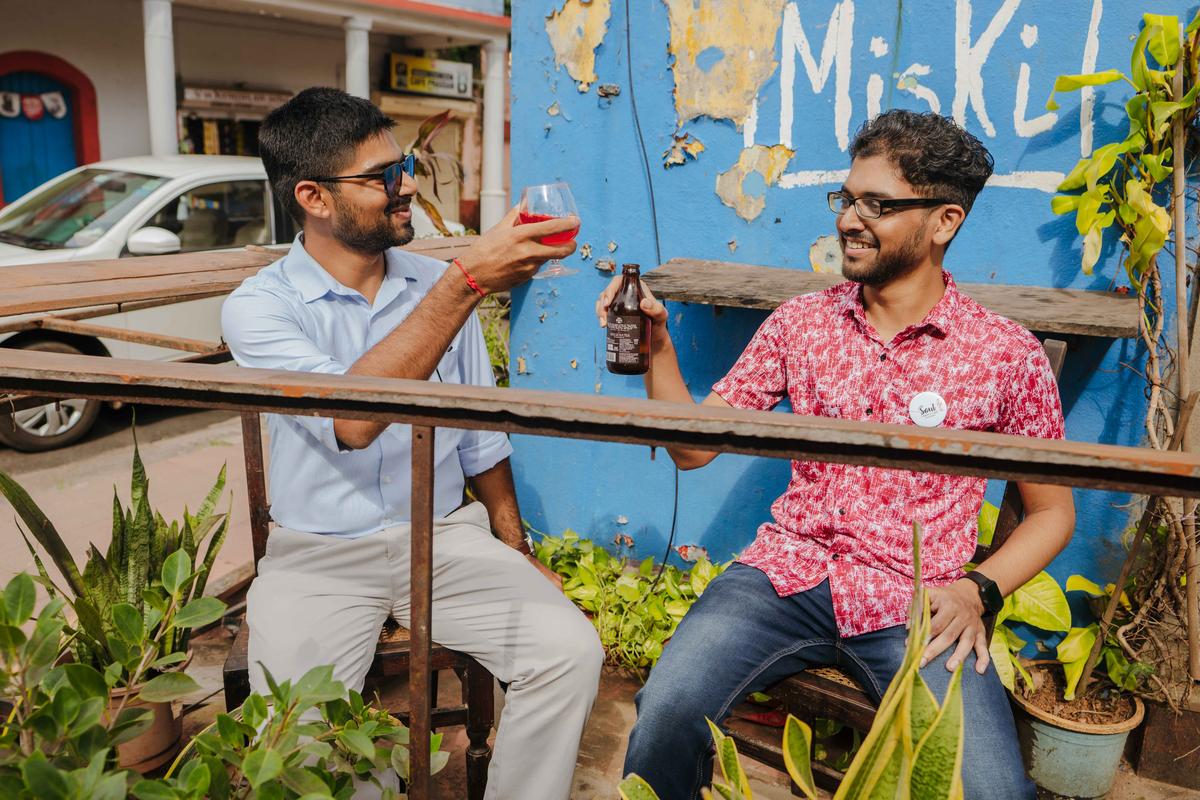
Travellers enjoying feni
| Photo Credit:
Soul Travelling
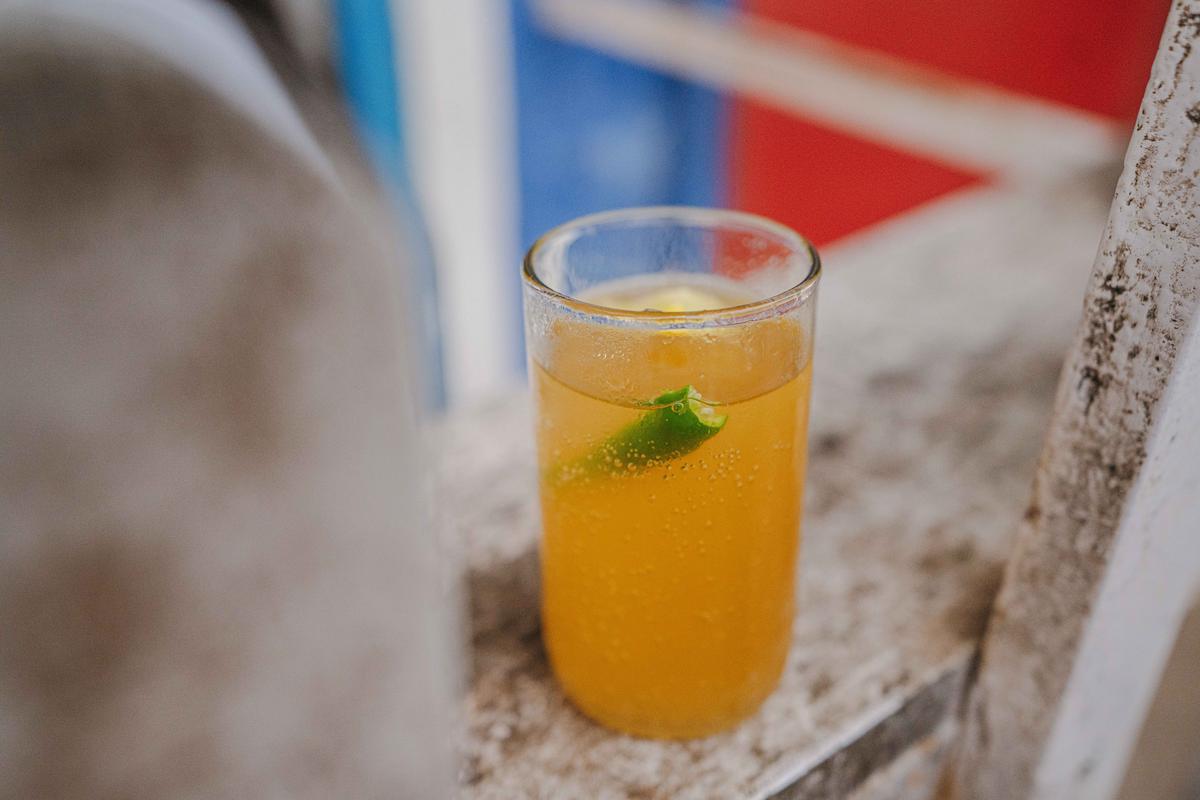
Feni being served
| Photo Credit:
Soul Travelling
For the adventure enthusiast
For those seeking an adrenaline rush amidst Goa’s monsoon magic, Adventure Breaks (adventurebreaks.in), founded in 2013 by yachtsman Kim Sabir and mountain climber Ashwin Tombat, offers the perfect escape. Renowned as Goa’s premier outdoor-adventure company, they present a thrilling array of activities from kayaking to rock climbing.
Yet, it is its South Goa ocean treks that truly shine during the season. Opt for the Ocean Trek Sea Cave near Loliem, a moderately-paced 4-5 kilometre half-day expedition involving a challenging boulder scramble and a climb into India’s longest West-coast sea cave, typically priced around ₹1,390-₹2,000 per person. Alternatively, the Ocean Hike to Eagles Cliff presents a moderate 4.5 kilometre journey through lush Canacona forests, culminating in breathtaking cliff-top vistas, usually costing around ₹1,220-₹2,000.
Families and first-timers might prefer the Four Beaches Jungle Hike, an easy-to-moderate trek weaving through dense greenery to secluded coves, typically priced about ₹1,890-₹2,000. For history buffs, the Ocean Trek to Cabo de Rama Fort offers a five kilometre moderate route past pebbled beaches to a centuries-old Portuguese fort, priced from around ₹1,310 -₹1,750 for scheduled trips. Lastly, the Ocean Trek Fortaleza Cabo traverses rugged headlands and quiet fishing coves with gentle climbs, typically ranging from ₹1,220-₹1,500. Do bear in mind that prices can vary based on group size and booking type, with private treks generally costing more.
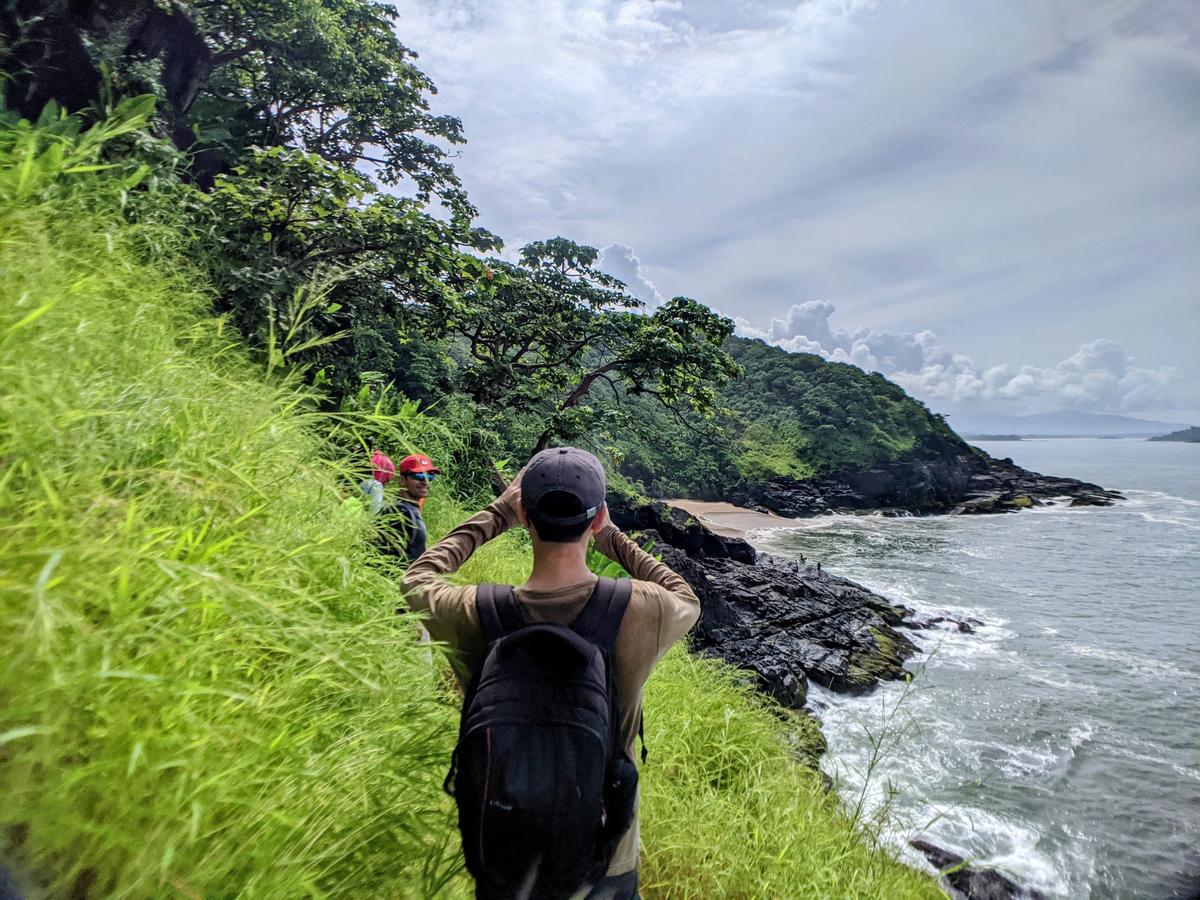
Travellers on an adventure trail in South Goa
| Photo Credit:
Adventure Breaks
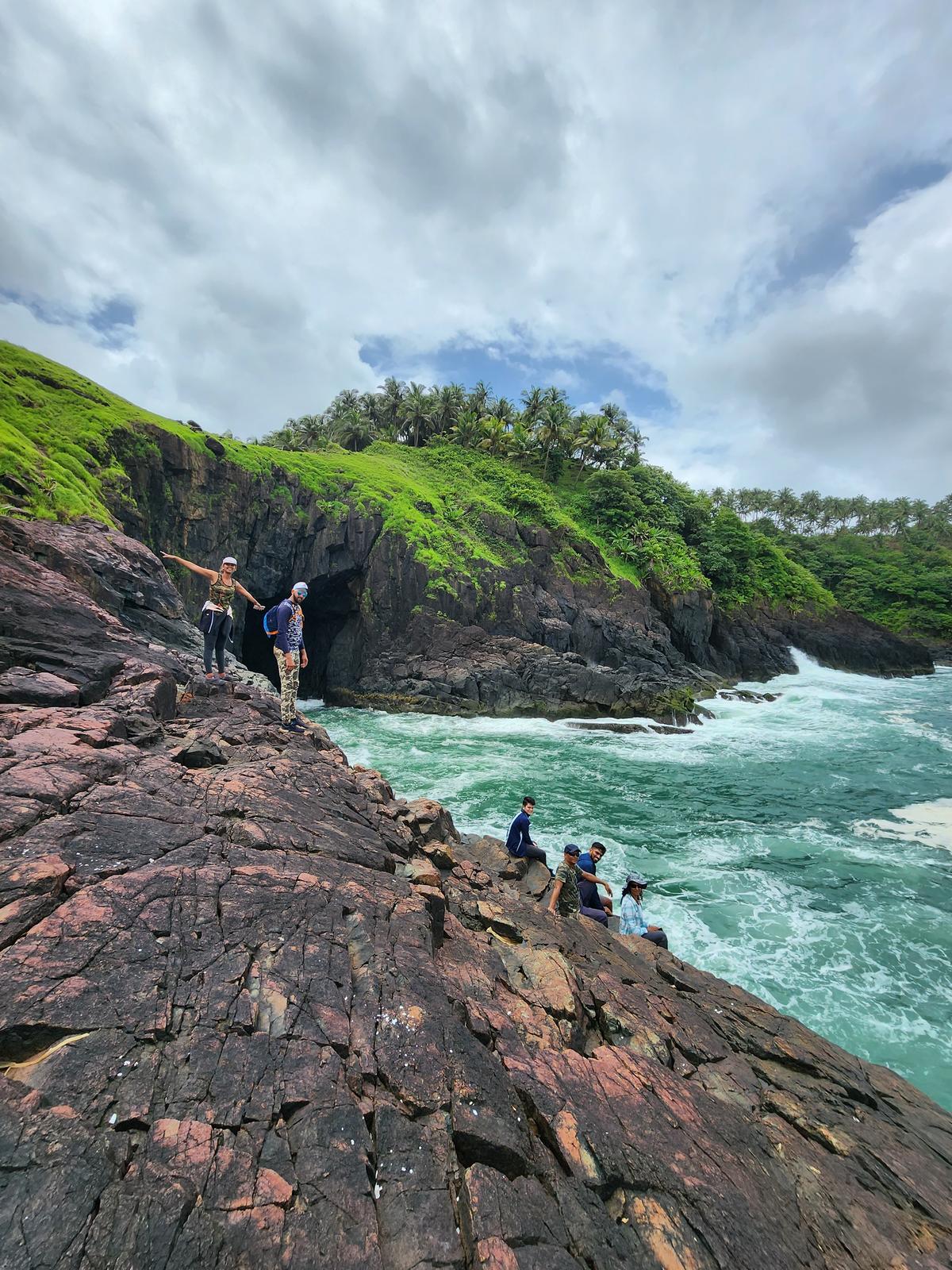
A monsoon trek
| Photo Credit:
Adventure Breaks
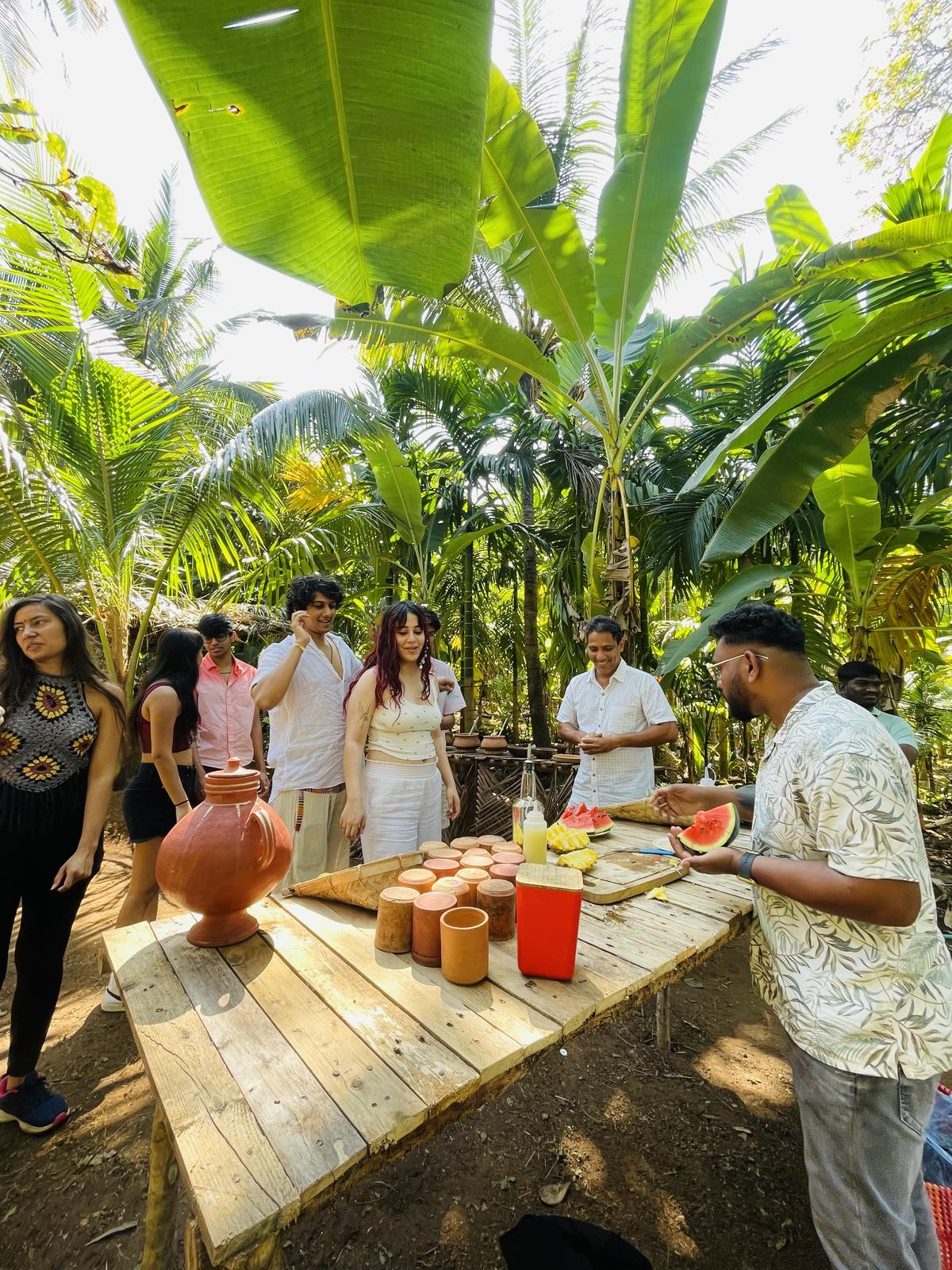
Refreshments being served
| Photo Credit:
Soul Travelling
For a gentler immersion into South Goa’s hidden soul, Mackinlay Barreto, through his by-appointment-only tour company The Local Beat (@thelocalbeat_goa), promises to unveil a Goa many believe no longer exists. As Mackinlay insists, “That Goa is very much alive. You just need to know how to connect with it.” The Local Beat curates experiences that tap into the Goa of the ’70s and ’80s. In the rains, their Vhaall: The Aqua-Fresco Picnic is a true daydream: a drive deep into the forest, a light walk, forest bathing, seasonal Goan bites, feni cocktails in a khopp (hut), and a hearty lunch cooked by a local kaki (aunt), with prices typically ranging from ₹3,000-₹5,000 per person depending on customisation and group size.
There is also Chol Kopp-ak, a tavern-hopping trail soaked in stories, urrack, and local food, often priced around ₹2,500 – ₹4,000 per person; and Zorachem Caant, a child-friendly, pet-welcome forest spring picnic that feels like Goa’s version of a spa day — splashes, snacks, and slow joy in equal measure, usually costing between ₹2,000-₹3,500 per person. These experiences are highly curated, and final prices often depend on the specific inclusions and bespoke nature of the booking.
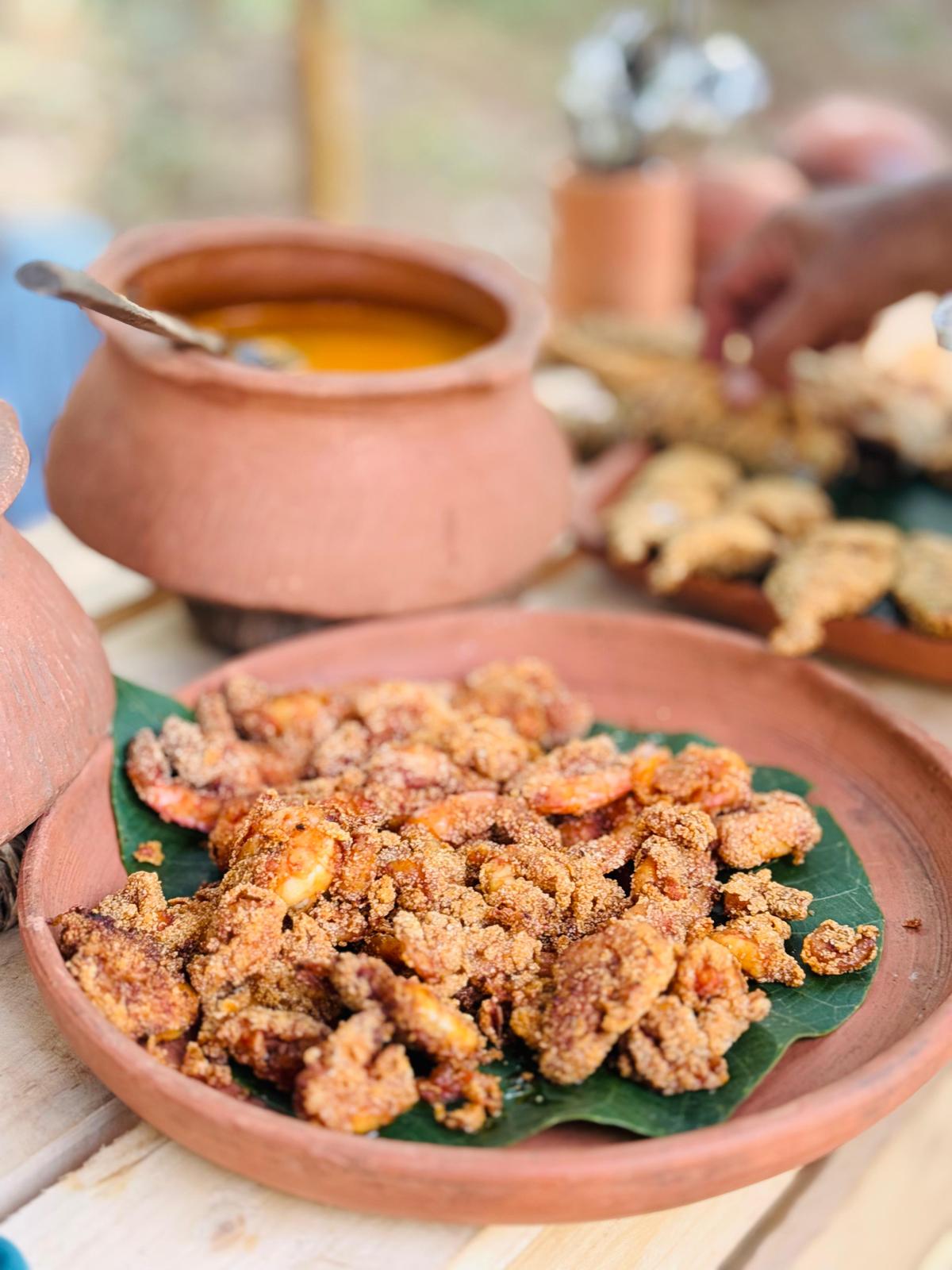
Rawa fried prawns
| Photo Credit:
The Local Beat
None of these experiences come with neon signs. Some do not even come with exact addresses. What they offer instead is an invitation to slow down.








